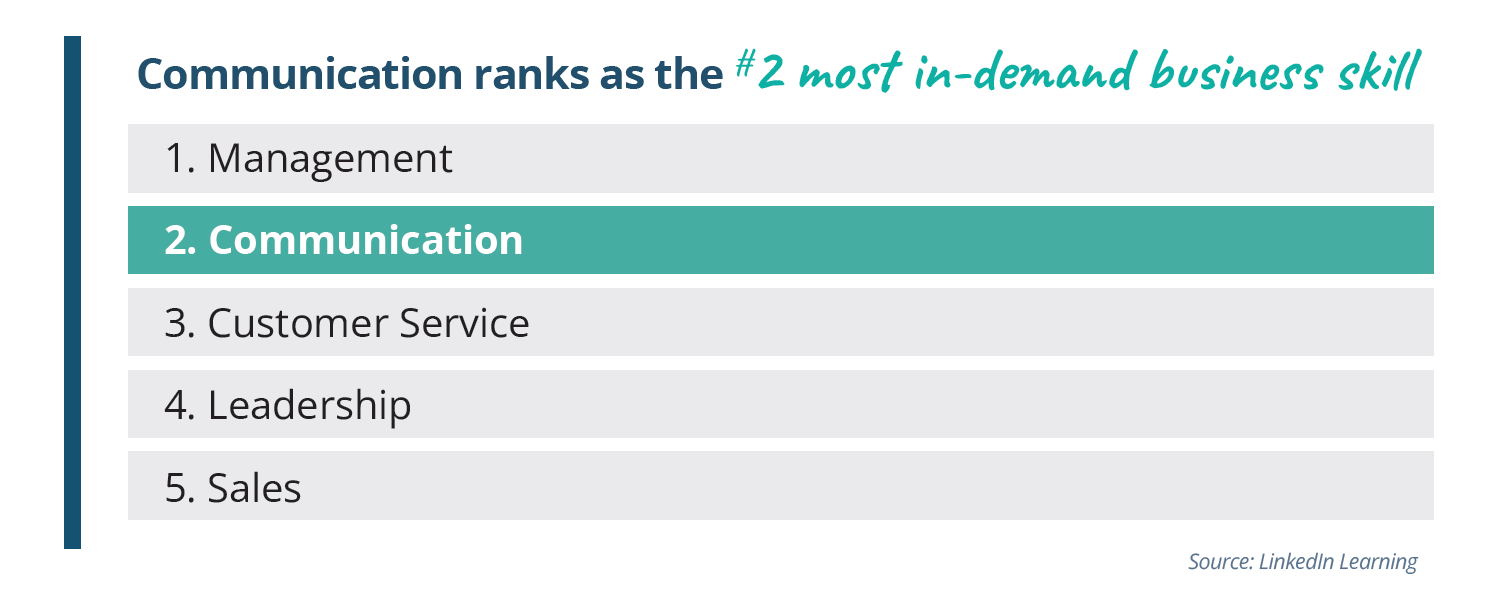We get it… your team needs to demonstrate value, influence decision-making, and drive business forward. But the reality is, everyone is moving fast, has lots of ideas and data to communicate, and needs to adapt to a variety of customer and stakeholder needs—all with limited time and resources.
When you’ve only got one shot to communicate your message and stand out, it’s never been more critical to have clear and concise communication across your organization.

According to a recent study, 93% of business leaders acknowledge that effective communication is the backbone of their business. But nearly three in four business leaders say their teams struggled with communicating effectively over the last year. And here’s the real kicker: Poor communication can cost your organization $12,000+ per employee every year.1
Of course, those numbers don’t convey how poor communication manifests itself in everyday business interactions. Think about all the ineffective meetings that lead to yet another meeting to gain clarity. Consider all the poorly communicated initiatives that don’t achieve results. Or how about the lack of collaboration that stifles innovation, and the snooze-worthy decks that miss the chance to influence and require upper management’s time to rework? And finally, the exhaustive data reports that lack any contextualization or BIG Idea and leave decision-makers decoding, “What do you want me to know or do?”
We could go on and on, but you get the picture.
Over time, those deficiencies add up, and they all point to one root issue—a lack of effective communication skills. The question, then, is how do we address this skills gap… and what’s the best way to integrate the learned skills into your organization?
We believe storytelling is the key to transforming people into strategic communicators and influencing organizational change.
It’s time to empower your people with the skills to help progress strategic priorities, deliver on long-term value, and optimize business impact. Let’s dig into just some of the ways you can use storytelling to elevate your business…
- Uplevel the conversation
Any executive will tell you it’s never been more critical to strategically influence the conversation. No longer is this a skill reserved for senior management; it’s a skill everyone needs. Storytelling will make employees more dynamic communicators, while also making them more thoughtful listeners and more confident problem solvers—critical skills that can be applied to any role. And because storytelling gets everyone communicating in the same way, conversations are more productive across departments, as well as up and down the chain of command. - Supercharge data literacy and analytics
Every day, data drives business-critical decisions. But when presented poorly, data can create confusion, leading people to misinterpret your message and stall decision-making. Knowing how to extract and interpret data is only one side of the coin; the other side is having the data literacy and analytics skills to transform data into insights. Storytelling empowers anyone who works with data with the skills to curate and present data insights that advance the story, which will help stakeholders understand complex concepts, remember key information, and ultimately make informed decisions. - Communicate change
Despite the ongoing nature of change in business, change management is still an area where many organizations struggle. 70% of change communications and programs fail to achieve their goals, according to McKinsey.2 Getting employee buy-in and engagement is critical to any successful transformation effort. Storytelling is your secret change agent. It humanizes the “why, what, how” to your audience, which makes employees feel like they are a part of something, rather than just receiving an impersonal business update. - Boost executive presence
Contrary to what many people think, executive presence is not about personality, it’s about skill. Anybody can learn how to have executive presence. The key is to establish connection, and storytelling gives you the chops to connect authentically and with more authority. Displaying confidence, showing mastery of material, and flexing your narrative in real-time to meet the diverse needs of your audience is the ultimate showstopper. Who wouldn’t want that for their team? - Align cross-functional teams
Hybrid work has forever changed how teams work and collaborate, with employees under increased pressure to communicate and present information in succinct and engaging ways. Research shows that 81% of leaders believe collaboration is critical to their company’s success.3 Using a common language like storytelling is a sure-fire way to break down silos and build up teams. Whether holding a brainstorming session, presenting an update, or writing an email, a culture of storytelling establishes a mutual methodology for teams to share ideas, interact, and get on the same page. - Give everyone a voice
Creating equitable opportunities and inclusive language are now baseline expectations within Diversity, Equity, and Inclusion (DEI) initiatives. Employees want a company culture that provides a sense of belonging and allows everyone to feel seen and heard—no matter gender, race, role, or ethnicity. Storytelling skills can be scaled across the entire organization, giving everyone a seat at the table and the ability to effectively share their ideas, no matter their role or seniority. It’s time to debunk workplace stereotypes of ‘the engineer’ or ‘finance person’ who can’t communicate. Let’s give them the skills, not the label! - Invest in your people
Talent shortages have left many teams with an uneven mix of skills and institutional knowledge. Upskilling the talent you already have in your arsenal is truly your best investment. Equipping existing employees with new skills not only benefits their professional growth, it positions them for new roles, added responsibilities, and helps them adapt to the evolving needs of your business. It also makes them feel valued. According to a recent survey done by Microsoft, 76% of employees said they’d stick around longer if they could benefit more from learning and development support.4
Can business storytelling really accomplish all of this? The answer is yes (and more!). Stories help people understand ideas through the power of emotion—giving your audience a reason to care about anything you say, send, deliver, or present. Whether you’re looking to align your teams, drive DEI initiatives, or demonstrate value, business storytelling might be the secret to your success.
References:
1Grammarly/The Harris Poll, 2023 The State of Business Communication
2McKinsey & Company, Changing Change Management
3Harvard Business Review, How Collaboration Wins
4Microsoft, Hybrid Work is Just Work. Are We Doing It Wrong?
